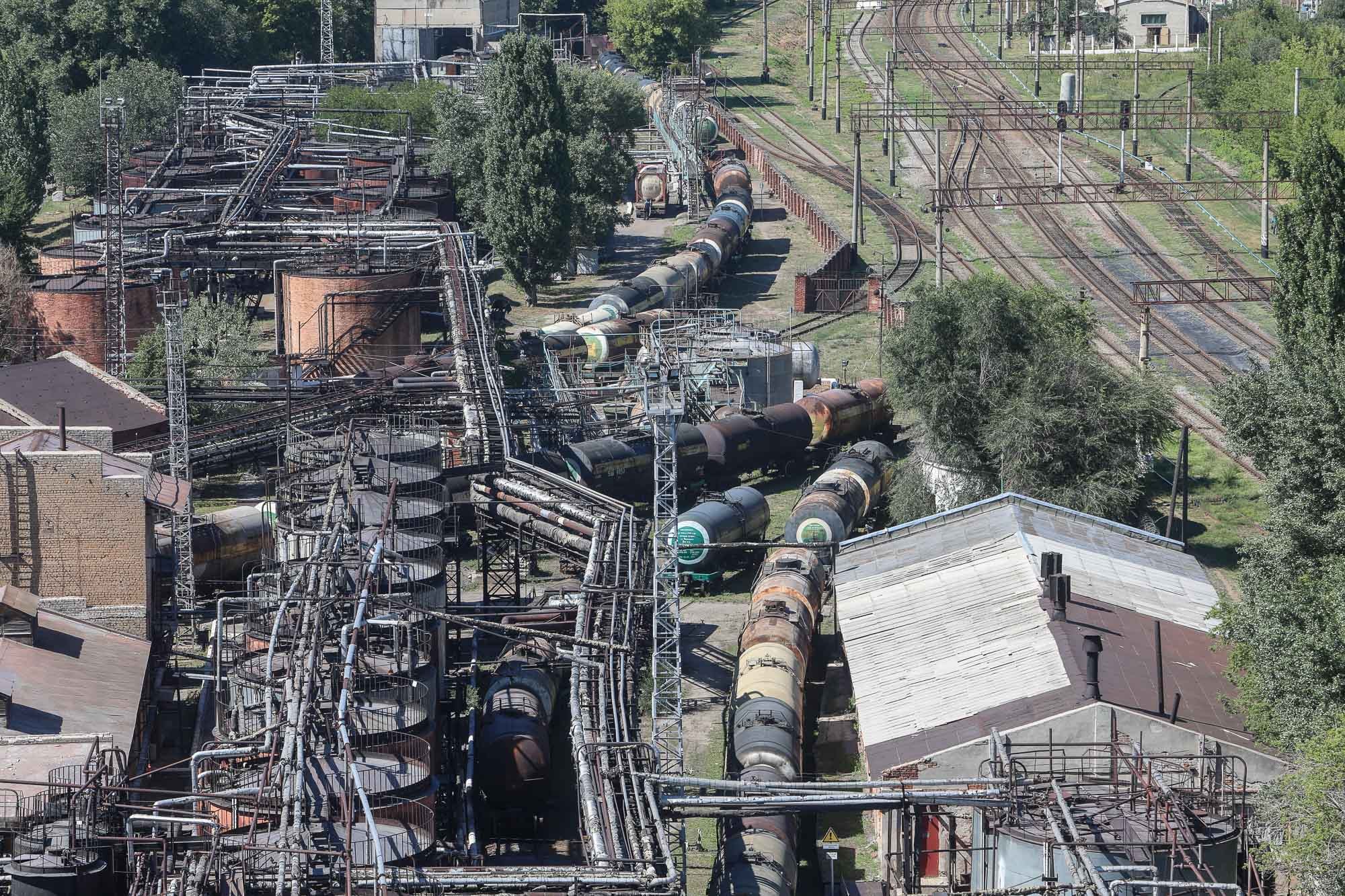For decades, it has been the butt of local jokes and the subject of urban legends in the industrial jungle of Ukraine’s Donbas.
Now, a fun fact from the region’s uneasy history is coming back to life. Novhorodske, a factory town of 10,000 in Donetsk Oblast some 580 kilometers southeast of Kyiv, has moved closer to reinstating its historic name, New York.
The decision was endorsed by the Verkhovna Rada’s local governance committee on Feb. 3, with 18 lawmakers voting yes and none objecting.
“Congratulations, Ukrainian New York in Donetsk region,” Roman Lozynskiy, a member of 20-seat Voice (Holos) party wrote on his Facebook page after the vote.
According to the committee, the renaming was approved after an official request from the Donetsk Oblast Civilian-Military Administration, the region’s unelected wartime governance body.
It’s unknown when parliament will vote to make the name official.
The little Ukrainian namesake of America’s Big Apple is located on the very edge of the war zone of Donbas, close to the major Russia-occupied city of Horlivka. Trench lines run just hundreds of meters away from the town’s southeastern outskirts.
This sleepy and depressing settlement is best known for its large chemical factory, part of holding company Metinvest owned by Ukraine’s top tycoon Rinat Akhmetov.

A view of the Fenol plant in Novhorodske on Aug. 1. 2017 (Volodymyr Petrov)
It is one of Europe’s biggest reprocessors of coking coal and the community’s only major employer.
The town was founded in 1892 by German Protestant colonists looking for a place to settle down as a religious community along the loosely populated banks of the Kryviy Torets River. The settlers established successful machinery workshops and several windmills.
It is not clear who among the settlers decide to name the colony New York and why.
Local lore attributes this honor to entrepreneur Yakov Unger who was a great fan of the real New York City, and to engineer Yakov Nibur who just wanted to cheer up his homesick American wife.
“In the early 20th century, New York had a central training school, a girls’ high school, a bank branch and a book store,” according to the Ukrainian government’s historical reference in December 2019.
“The German community has deployed a large business in agriculture, production of wall bricks and machinery… (The local) plant manufactured agriculture and oil-pressing equipment. During World War II, the factory even produced hydrobomb components for some time. With the coming of the Soviets, the enterprise was nationalized and later restructured to produce coal mining machinery.”
The settlement barely survived the destruction of World War II. Old military dispatches reporting on Soviet troops liberating New York from Nazis in 1943 must be hell of a fun read.
During the height of the Cold War anti-American sentiments propagated by the Soviet government, New York was renamed Novgorodske in 1951.
“By the time the town was renamed, there was almost no descendants of German founders still living there,” Ukraine’s government stated in December 2019. “The Soviet authorities ruined the churches and most of the buildings that formed the European charm of New York. And during World War II, all local ethnic Germans were deported by Joseph Stalin’s command either to labor camps or to beyond the Ural Mountains.”
Still, even many decades later, locals still remembered to town’s old glory.

A worker walks through the territory of the Fenol plant in Novhorodske on Aug. 1. 2017 (Volodymyr Petrov)
The story of a New York in the Donbas steppe because a standing joke to amuse outsiders, as well as a comfortable brand name for dubious local gas stations and eateries.
With the outbreak of Russia’s war in Donbas and the national drive to get rid of old Soviet toponyms, a few local activists started campaigning for reinstating the historic name.
The cause went far beyond the local community, with well-known Kyiv journalists and government officials involved. For instance, the campaign’s private Facebook group, Ukrainian New York in Donetsk region, has nearly 1,700 members united for a small town of less than 10,000 residents.
The idea was also endorsed by Mykola Lenko, the chairman of Novhorodske’s local governance council.
“This is of great historic significance and also a chance to invite investment, develop tourism, and launch the reconstruction of our region,” the official wrote on his Facebook page in December 2019.
“This gives us hope for a better tomorrow.”
The renaming was also endorsed by then-Deputy Prime Minister for European integration Dmytro Kuleba, who currently serves as foreign minister.
But the situation in New York is grim.
The town’s grand factory, which works with very hazardous chemicals, is just hundreds of meters behind combat lines. Its facilities are under permanent threat of collateral damage.
The the factory’s two waste storage ponds in no man’s land present the greatest concern.
According to the factory’s specialists, the waste ponds are slowly decaying due to the lack of regular maintenance.
Should the installation’s protective levees be breached, the ponds could release up to 400,000 cubic meters of waste chemicals, sulphuric acid and formaldehyde, which would result in major contamination of the region’s groundwater.

A worker walks through the territory of the Fenol plant in Novhorodske on Aug. 1. 2017 (Volodymyr Petrov)
